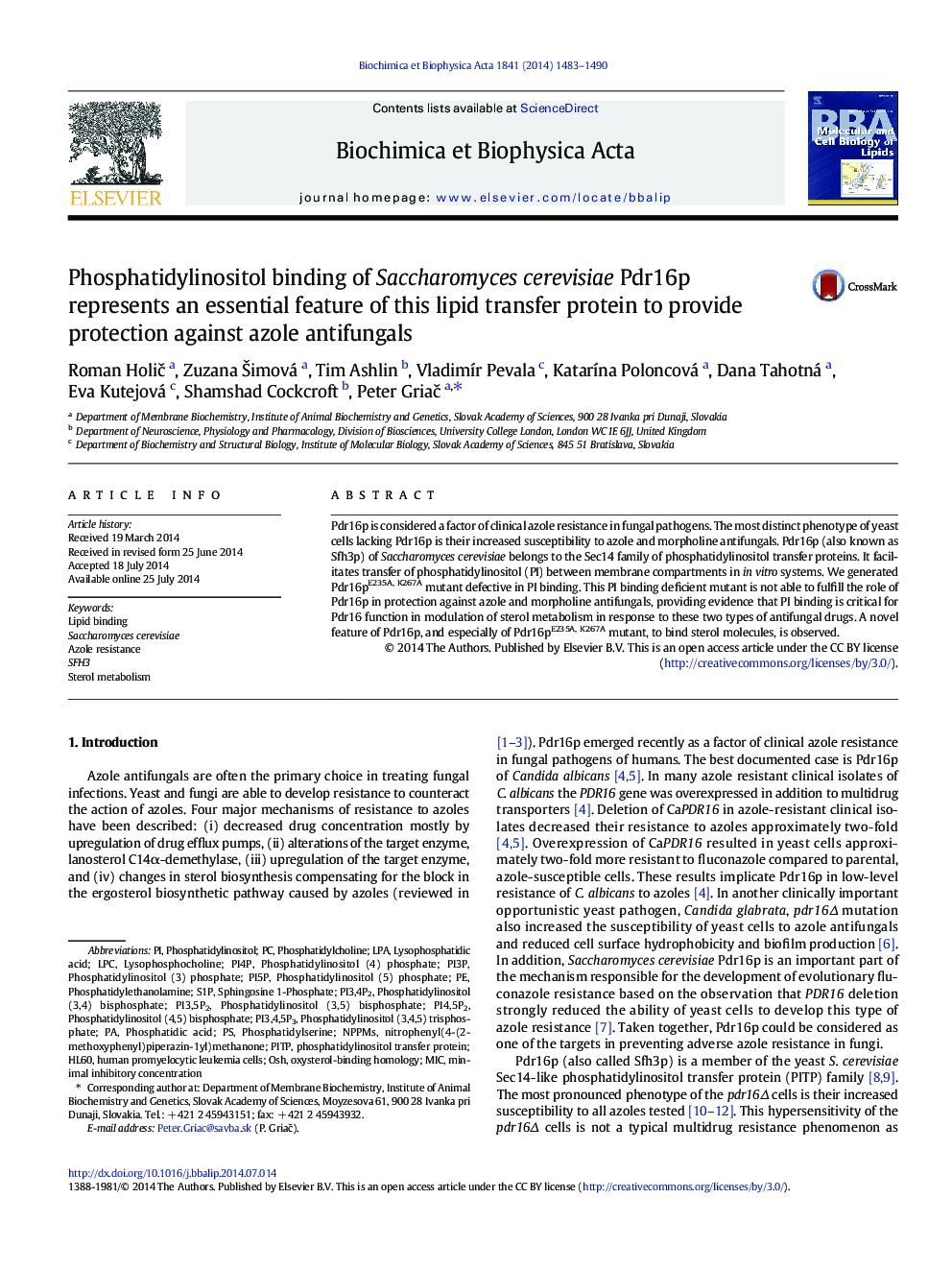| Article ID | Journal | Published Year | Pages | File Type |
|---|---|---|---|---|
| 8302260 | Biochimica et Biophysica Acta (BBA) - Molecular and Cell Biology of Lipids | 2014 | 8 Pages |
Abstract
Pdr16p is considered a factor of clinical azole resistance in fungal pathogens. The most distinct phenotype of yeast cells lacking Pdr16p is their increased susceptibility to azole and morpholine antifungals. Pdr16p (also known as Sfh3p) of Saccharomyces cerevisiae belongs to the Sec14 family of phosphatidylinositol transfer proteins. It facilitates transfer of phosphatidylinositol (PI) between membrane compartments in in vitro systems. We generated Pdr16pE235A, K267A mutant defective in PI binding. This PI binding deficient mutant is not able to fulfill the role of Pdr16p in protection against azole and morpholine antifungals, providing evidence that PI binding is critical for Pdr16 function in modulation of sterol metabolism in response to these two types of antifungal drugs. A novel feature of Pdr16p, and especially of Pdr16pE235A, K267A mutant, to bind sterol molecules, is observed.
Keywords
Related Topics
Life Sciences
Biochemistry, Genetics and Molecular Biology
Biochemistry
Authors
Roman HoliÄ, Zuzana Å imová, Tim Ashlin, VladimÃr Pevala, KatarÃna Poloncová, Dana Tahotná, Eva Kutejová, Shamshad Cockcroft, Peter GriaÄ,
